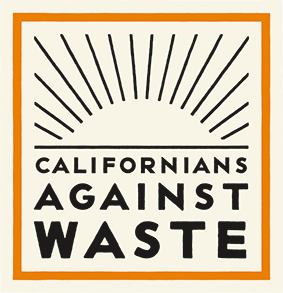Carton Recycling Efforts in California Struggle, New Report Shows
For Immediate Release
September 16, 2014
Carton Recycling Efforts in California Struggle, New Report Shows
Californians Against Waste Calls for Bottle Bill-Style Incentives and Greater Producer Responsibility
Contact: Mark Murray, (916) 443-5422
Sacramento, CA – Despite substantial growth in residential collection opportunities in California, there is no evidence that actual recycling of beverage cartons in California has moved beyond the “Negligible” level reported by the US Environmental Protection Agency in 2012. The findings are contained in a report released today by the environmental group Californians Against Waste.
California recycles more than 90 percent of its aluminum containers, more than 80 percent of glass and close to 70 percent of plastics. But, according to the report, “Boxed In: a Better Plan for Carton Recycling in California,” less than three percent of the two billion cartons in circulation each year in the Golden State get recycled.
The report was based on a statewide survey and interviews of local recycling coordinators, collection program operators, and recycled material processors and brokers.
Despite a reported multi-year $2 million initiative by carton manufacturers (Carton Council) to increase acceptance of cartons in curbside recycling programs, most operators of material recovery facilities (MRFs) in California remain skeptical that collected cartons are actually being recycled into new material.
According to Mark Murray, Executive Director of Californians Against Waste, “It does not appear that Cartons have demonstrated the legal threshold necessary to be marketed and labeled as a ‘recyclable’ container in California.”
Among the findings of the report:
37% of MRF operators surveyed reported landfilling collected cartons due to insufficient/uncertain collection volumes and markets.
47% of MRF operators reported diverting cartons into mixed waste paper bales for export, with no knowledge as to whether the cartons ended up being recycled.
Only 13% of surveyed MRF operators reported segregating cartons for recycling using industry specification, PSI grade 52.
Most of the facilities handling the waste have no capacity for recycling the cartons, which are made of poly-coated paperboard and require special processing. In fact, California has no in-state facilities with a hydropulper or other machine capable of converting cartons into new fiber.
“While the potential for carton recycling remains a strong possibility in California, it has not yet become a reality,” said Murray. “Carton manufactures have recognized the need for a financial investment to make recycling a reality in California, but the level of that investment to date has been far too small and narrowly focused for carton recycling to become successful.”
More than two billion beverage cartons are generated in California annually, the vast majority of which are landfilled. By comparison, aluminum and glass beverage containers are recycled at an 85% - 95% recycling rate, while even plastic beverage containers are recycled at a better than 65% rate.
“California has demonstrated that with the right incentives and infrastructure, most any container type can achieve a successful recycling level,” said Murray. “Despite years of voluntary effort and feel good messaging, the recycling rate for beverage cartons remains far from successful. It’s time that these containers are brought into the state’s successful beverage container recycling program.”
California’s Beverage Container Recycling program (Bottle Bill) provides consumers and recyclers with a 5-cent or 10-cent recycling incentive. Built into the program are manufacturer incentives to design for recycling as well as support for development of end-use markets. Today, better than 80 percent of beverage containers covered by the program are returned for recycling. Most of these beverage container materials are processed and manufactured into new materials here in the state.
To date, there are no California end-use markets for cartons, creating an economic and environmental opportunity loss. By comparison, there are six plastic processors in CA, processing more than 70,000 tons a year, and providing more than 500 jobs. In fact, in-state processing of PET bottles went from virtually nothing 10 years ago to better than 50% today thanks to a combination of state incentives and private investment of more than $70 million.
California would need similar investments for cartons in order to get better than the ‘negligible’ recycling rate it has now.
CAW is calling for new incentives and infrastructure for carton recycling along the lines of the Bottle Bill, which proved highly effective in boosting other forms of recycling. CAW’s report projects that with the right legislative framework, the rate of carton recycling could increase dramatically – to 25-33 percent within three years.
###
Californians Against Waste is a non-profit organization dedicated to conserving resources, preventing pollution and protecting the environment through the development, promotion and implementation of waste reduction and recycling policies and programs.
